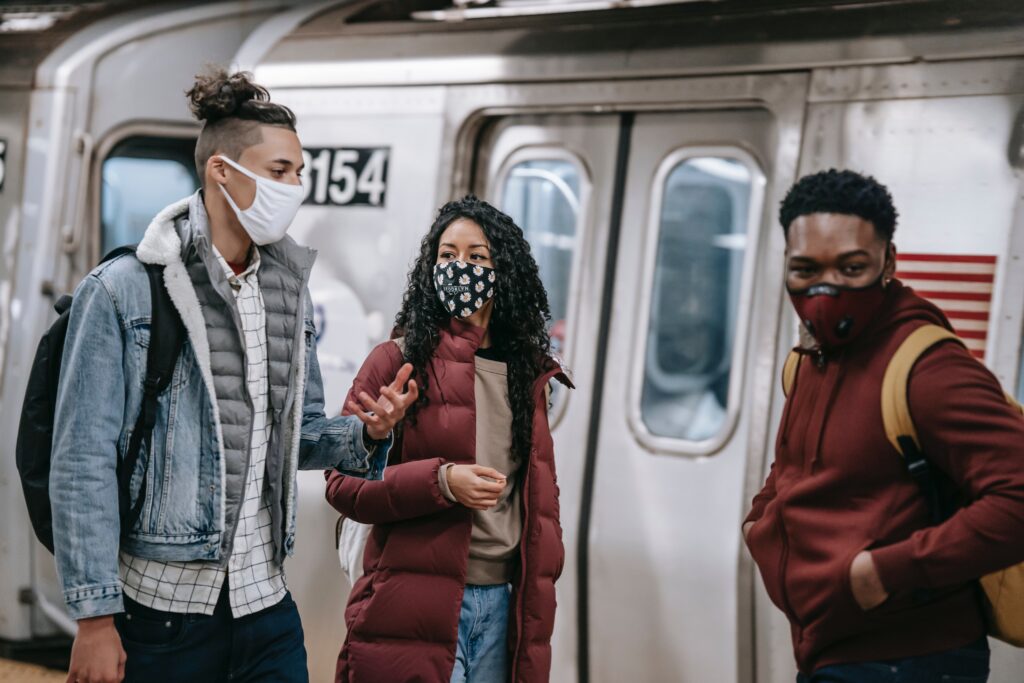It’s a bright sunny day as my daughter and I hop on the train to go to Berlin, taking a regional S-Bahn commuter train to the main station. I contemplate how different Berlin is from relatively sleepy Munich. While the latter city only gained economic importance in the 1960s and was never more than the capital of Bavaria, Berlin was the capital of an empire and boasts sweeping boulevards and bombastic buildings reminiscent of Paris, Madrid or New York.
But somehow Munich isn’t as provincial as it likes to pretend it is. The Oktoberfest is feted as the largest “folk festival” in the world – so of course, Munich has to be a sort of Bavarian cow town, how else could they host anything with local flavor as its main theme?
The sights and sounds on the train around me on the train reflect a more accurate reality of the city. American born and bred, I stand with my daughter, German born and bred, so we are not exactly representative of local culture. Two very tall Africans stand in the doorway, very quiet, looking out of place and slightly ill at ease. These are doubtless some of the 1.5 million refugees let into the country in the summer of 2015. Germany strategically divided them up amongst the towns to spread the burden and with the hope of enabling them to integrate better. You can often see them on the train coming into the city from whatever provincial town they were assigned to.
The train stops and the doors open. In steps an Indian man. He looks to be in his late 20s in jeans and a dress shirt with the standard equipment: backpack and cell phone. There are lots of Indians here and they all look pretty much like him, working for Siemens or another of the many large multinationals here. As he looks down and begins texting, I muse how very international the city has become.
But wait! Two 70ish women behind me save the day: I hear them chatting in the rolling Bavarian dialect characteristic for Bavaria. Many locals bemoan the fact that this dialect is hardly spoken in Munich anymore, but it’s no wonder. The percentage of people who are foreign or with foreign roots now exceeds 40%, none of whom can speak dialect (except for me: I pride myself in being able to rattle off a few words and expressions here and there, much to the amusement of the Bavarians).
This large number of outsiders is not even considering all the Zugeroasten (don’t be fooled – this may look like it has something to do with a BBQ until you know the proper pronunciation is “tsu-guh-roah-stn”). This is Bavarian dialect for people who have moved here from somewhere else in Germany, a word that bears the vague scent of disdain about it. All German regions have their own dialects. If someone comes from a small town they are often able to speak it, but in cities it is much rarer. No one can entirely escape the regional pronunciation, however, so as soon as you say a few words someone with a discerning ear will be able to identify your region of origin.
Now we’re on our way, hurtling on a high-speed ICE through the Bavarian countryside. After this record-breaking summer the hops used for making beer can be seen strung up high, green vines stretching up to the sky. My very punny daughter can’t resist remarking that if someone had a castle here, he would be called a Hopsburg.
In front of us on the train is a Spanish family, on their way to joining the already huge hordes of Spanish tourists in Berlin. I’m not sure why it’s such a popular tourist destination for them, but wherever you go in Berlin you’re sure to run into a group of Spanish tourists with their guide telling them who Alexander von Humboldt was, that there is no Hitler bunker (the Soviets blew it up and the Germans subsequently paid him the ultimate disrespect: they followed Janis Joplin’s advice and put up a parking lot over it) and showing them where the Berlin Wall used to be. The 10-year-old Spanish boy is reading a Spanish translation of one of Greg’s Diaries, a series of books that my daughters devoured when they were his age. My daughter can’t resist pointing out to me that the Spanish mom as the same “mom hairdo” that I do: shoulder-length hair with the bangs held back with a clip. Ha-ha. This is my working hairdo, thank you very much.
I’m glad the days are over when Europeans were pointing guns at each other and an American with a half-German daughter would have been a rarity or even in danger. The train arrives at Hauptbahnhof in Berlin, the main station, and the Spaniards gather up their bags. We’ll probably see them gawking at the Brandenburg Gate, a symbol of division that has now morphed into more of a symbol of unity. I’ll be sure to check to see if the mom still has her working hairdo, too.
Brenda Arnold
Photo by Keira Burton on pexels
